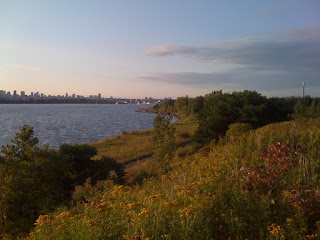
Ansel Adams was an American photographer best known for his black and white photographs. One of his most famous photographs was Moon and Half Dome, Yosemite National Park California. Adam’s helped develop the Zone System* as a way to determine proper exposure and adjust the contrast of the final print. The resulting clarity and depth characterized his photographers and the work of those to whom he taught the system. Adam’s used large format cameras despite their size, weight, setup time and final print.
(*Zone system-provides photographers with a systematic method of precisely defining the relationship between the way they visualize the photographic subject and the final results)

I chose to do my photographs similar to the style of Ansel Adams because his photos were of landscapes. Also they were all generally in black and white. I found that when looking at Ansel’s photographs they were mostly landscape, which is something I have grown quite fond of in the last couple years. When I edited my images I adjusted the contrast and temperature as well as put them all into black and white. My photographer helped me realize the true beauty of nature. Although these photos were taken in the winter, I feel as though they are similar to Ansel’s style of photography. They are not only landscapes, but I feel as though they help capture the beauty of nature. The similarities between my photographs and Ansel’s are basic. We both took pictures of landscapes/nature, and what seemed beautiful at the time. The differences are defiantly where the photo was taken as well as how dark or light a picture is. I found that Ansels photos also included the sun and or the moon as well as a lot of clouds.
I feel as though we take the beauty of nature for granted, often people are too busy to just stop and look at the clouds. Living in our busy society today we realize that we're not taking care of the world around us. Over the years we've developed many problems around the world such as smog. These problems make it hard for future generations. I think that people just stop, and even look at these pictures and see how beautiful the world really is, that maybe everyone would stop and help. Maybe if they looked at these problems at an earlier date then we wouldn't have quite the same problems.
In conclusion, Ansel's photographs are an amazing example of how beautiful the world really is. Within Ansel's photographs you feel like your actually there, like nothing this beautiful could exist. Unfortunately if we don't start taking care of our world now, that beauty might not exist. I think my photographs are an amazing example of what beauty exists throughout the city of Toronto.

Cherry Beach, Toronto, Ontario. Photo by Amanda Rowe

High Park, Toronto, Ontario Photo by: Warren Stavert

Ashbridges Bay, Toronto, Ontario. Photo by: Warren Stavert

Toronto, Ontario. Photo by: Amanda Rowe

Lake Ontario, Toronto. Photo by: Amanda Rowe
Reference:
http://en.wikipedia.org/wiki/Ansel_Adams















